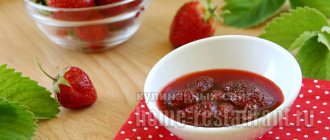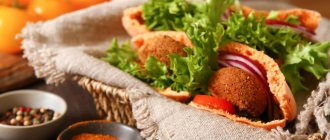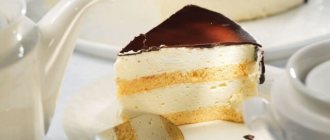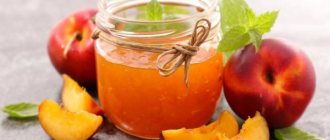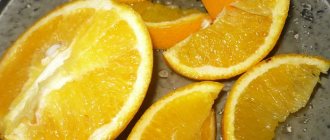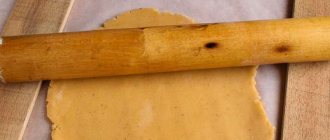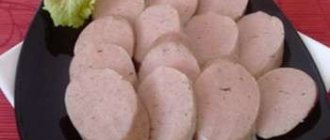Peaches are loved not only in the south, where the amazing variety of these fruits allows you to prepare a lot of all kinds of delicious things from them for the winter. They are valued for their delicate and at the same time juicy taste and many beneficial properties, most of which are also preserved during heat treatment. But in central Russia, even at the height of the season, peaches cannot be called the cheapest fruit. Peach confiture allows you to prepare a delicious preparation for the winter even from a small amount of fruit. In this case, time will be spent to a minimum, and in winter you will be able to enjoy an exquisite delicacy and show off your culinary art to your guests.
How to make peach confiture for the winter
Not all housewives clearly understand the difference between confiture, jam or preserves. Often the same dish is called differently. In fact, everything is very simple. Confiture is usually called a dessert in which small or large pieces of fruit are in a fairly thick sugar syrup. However, many still prefer jam, that is, a thick jelly-like fruit mass of uniform consistency. It can be more convenient to spread it on bread. Although for real confiture, at least small, but whole pieces of fruit should still be visible in this mass.
Achieving this dessert consistency from peaches is not always easy. After all, these fruits do not have a high content of natural thickener - pectin. Therefore, in traditional recipes, in order to make the product thick, a large amount of sugar and (or) long cooking is often used. You can also use the addition of various thickeners to the peach confiture according to the recipe: gelatin, pectin, agar-agar.
Peaches for confiture can be taken of any size, but it is more practical to use small fruits, which are often rejected for other preparations. It is advisable to choose the ripest representatives, which are characterized, first of all, by an attractive aroma, especially at the point where the fruit is attached to the branch. They make a dessert with a particularly airy, delicate creamy consistency.
If you use slightly unripe fruits, the consistency of the peach jam will be more granular.
Important! The peel also often becomes an obstacle to obtaining a delicate and uniform structure of peach dessert. It is customary to clean it up.
This is not difficult to do if the fruits are placed sequentially first in boiling and then in very cold water. Often the skin of the pieces begins to slide off on its own when the dish is boiled. In this case, it can also be carefully removed and removed.
The variety of peach and the color of its pulp determines the color shade of the future harvest. It can vary from soft greenish, yellow to orange-pink. What kind of peaches to use for confiture is a matter of choice for the housewife; in any case, the preparation will turn out very tasty.
Tips for making thick jam
Many people initially love to eat sweet and healthy fruits.
Unfortunately, this can only be done fresh in the summer. However, there is always the opportunity to preserve your scent until winter. Opening a jar of homemade jam when there is already snow outside is a real joy for everyone who doesn’t mind getting a fruit dessert.
However, many recipes for making jam, as well as the technological process itself, involve creating a fairly liquid consistency that can be added to tea or bread with varying degrees of success.
However, it is not very suitable for preparing any pies, pies and pastries, and during heat treatment such a composition flows out quite quickly and easily, forming an unpleasant soot around.
Of course, nowadays it is not difficult to purchase ready-made fruit jam and marmalade in the store, which will not spread when cooked.
However, for everyone who has their own dacha or can get fresh ripe fruits in the summer, they still want to prepare it themselves and get a ready-made, easy-to-eat product for the entire autumn-winter period.
However, there is always a way out of the situation. No matter how liquid the jam is, you can always take the necessary measures during preparation, which will not at all affect the final result and at the same time make the finished product much more convenient to use.
It is best to go the route of making jams. Classic jam is made from greenish, unripe fruits precisely so that the pectin they contain thickens the consistency of the delicacy. Currently, you can find pectin in powder form in the store without any problems.
It all depends on what specific consistency you are willing to get and what results you are willing to put up with. In particular, to make confiture from the product, it is advisable to use a packet of agar-agar for every two kilograms of berries or fruits.
This will ensure a moderately thick jam is created. The advantage of agar-agar is that it can be added even to a boiling mixture without any problems.
If you want to get an even thicker consistency or even make marmalade, then the ratio between agar-agar and fruits should be within one bag per kilogram.
To gently increase the thickness of the jam, you can experiment with adding products rich in pectin. First of all, you can add grated apples, currant puree, gooseberries or even citrus zest. Red currants have excellent gelling properties when added.
It would be a good idea to collect fruits for food only in the driest weather. This advice is especially relevant for all types of berries.
As a result of rain, the fruits are quite intensively filled with moisture, becoming too heavy and overflowing with water.
As a result, they will have to be boiled long enough to obtain the required consistency by evaporation. It’s worth remembering, but if you picked the berries right after the rain, be prepared for the jam to look like berries floating in liquid syrup.
It is recommended to lightly dry the food before cooking. If the goal is to create thick jam, excess moisture should be avoided at all stages. It is worth noting that simply increasing the duration in order to evaporate excess moisture will achieve little.
Too much intensive heat treatment will simply destroy most of the beneficial substances and complex organic compounds for which jam is actually famous. As a result, experts prefer to implement a three-stage processing scheme.
Tomato budenovka: variety description, photos, reviews, yield, characteristics, video - greenhouse tips
The products are processed on the stove for up to 15 minutes with intense boiling, after which they must be removed and cooled for 6 hours. After complete cooling, the procedure can be repeated twice more.
Note that some types of jam will still remain watery. In particular, this is most relevant for zucchini jam.
These vegetables contain too much moisture in their structure. Some housewives have tested the effects of lemon juice from their own experience.
If adding it does not spoil the taste, it is quite possible to use the corresponding recipe. When cooking, it is advisable to use open, wide dishes that provide the best evaporation of moisture.
Classic recipe for peach jam
For the simplest version of peach confiture for the winter, the following proportions of products are suitable:
- 1 kg of peaches, peeled and pitted;
- 1 kg sugar;
- 200 ml water;
- a pinch of citric acid (or half a lemon).
Comment! Citric acid not only improves the taste of the finished dessert, but also serves as an additional preservative.
Manufacturing:
- Boil water, gradually pour sugar into it, making sure that it is completely dissolved in it.
- Add juice from half a lemon or citric acid and simmer the syrup for some more time until thickened. Turn off the heat and let the syrup cool.
- Meanwhile, the peel and pits are removed from the peaches and the remaining pulp is weighed.
- Cut it into small slices.
- After waiting until the syrup has cooled to a temperature of + 40-45 ° C, add peach slices to the syrup and mix gently.
- Insist in room conditions for exactly one day.
- Then heat the slices of peaches in syrup until boiling and, after stirring, cover loosely with a lid and again leave in the room for several hours.
- For the last time, place the future confiture on the fire and cook after boiling for 20-30 minutes.
- Place the hot dessert in sterile jars and seal it hermetically.
In total, about 1 liter of finished product is obtained from the specified amount of ingredients.
Peach confiture with gelatin
Adding gelatin can help you easily obtain the required thickness of peach jam for any recipe. You just need to remember that gelatin loses all its properties when boiled, so it must be added at the very end of cooking.
You will need:
- 1 kg of peaches;
- 0.8 kg sugar;
- 2 tsp. vanilla sugar;
- ½ tsp. citric acid;
- 50 g granulated gelatin.
Manufacturing:
- Peaches are washed, pitted and, if desired, peeled.
- Gelatin is soaked in a small amount of cool water (in a volume 2-4 times greater than the substance itself) for 30-40 minutes. During this time, it should absorb all the water and swell.
- The fruit pulp can be finely chopped with a knife, or if desired, passed through a blender, leaving small pieces of fruit in the puree.
- Pieces of peaches are covered with sugar and placed on the fire in a suitable container for a short (10-15 minutes) boiling.
- When boiling, be sure to remove the foam from the fruits and add vanilla sugar and citric acid at the same time.
- Turn off the heat and add the swollen gelatin to the peaches.
- Mix the resulting mass thoroughly.
- The finished peach confiture with gelatin is laid out hot in sterile jars and sealed for the winter.
Gelatin
The human body needs amino acids and minerals. They have a beneficial effect on health, skin, nails, and hair. These components are found in gelatin, which is obtained through heat treatment of bones, tendons, cartilage of animals and fish. The substance eliminates the feeling of hunger, so the product is considered dietary. 100 g of gelatin contains only 355 kcal.
It can make jelly of all flavors, capable of mixing fruits and spices to invent new combinations. The recipe is always the same, the only changes are the amount of ingredients. Before preparing the recipe, you need to sterilize what will save the jelly. Place the pot in the oven for 15 minutes or wash the pot in the dishwasher. Okay, now that they are sterilized, let's get the recipe.
Place the strawberries clean and without cabin into the pan. Knead roughly with a fork, add the sugar and let it sit for 10 minutes. Add lemon juice and cook over medium heat, stirring occasionally. The pink foam that forms can be skimmed off if you prefer, this will prevent any jelly from getting in. After 20 minutes of boiling, the jelly should be thick. Place a spatula in the middle, if you open a channel that doesn't close you can remove it from the heat.
Gelatin is used to produce jellied products, creams, ice cream, and jam. Thanks to it, sugar does not crystallize. How to use jam thickener? To prepare the preparation for the winter, you will need berries (1 kg), sugar (1 kg) and gelatin (40 g). The dry substances are mixed and then the sweet product is prepared following the recipe.
Place the blackberries in a saucepan and bring to a boil, stirring slightly with a spoon. When it boils, lower the heat, add the sugar and let the heat thicken until it thickens slightly. When ready, let it cool and put it in the refrigerator. Place all ingredients in a frying pan and bring to medium temperature for 20 minutes without stirring.
Homemade mango jelly with pepper
The jelly gets its consistency after it cools, then puts out the fire and notices the change. Remove the garlic cloves, transfer the jelly to a glass jar and store in the refrigerator. Serves about 1 tablespoon Lemon drops Tahiti sea salt.
Peach confiture with pectin
Pectin is a completely natural thickener obtained, among other things, from plant products. Therefore, it can be used in vegetarian and various national cuisines, where there is a ban on the use of products made from pork bones.
Pectin has several properties that are determined by one or another type of this substance.
He can be:
- buffered (does not need to add acid for the gelation process) or not.
- thermostable (finished products can withstand subsequent heat treatment without changing their properties) or not.
Moreover, the specific type of pectin purchased is usually not indicated on the packaging. If necessary, its properties must be identified independently. Since there is a clear lack of natural acid in peaches, it is advisable to always add a little citric acid to peach jam with pectin.
Important! You should carefully follow the recommended rates for adding pectin to the preparations, since if there is a lack of it, the confiture may not thicken. And if there is an excess of it, the dessert may acquire an extraneous, not very pleasant aftertaste.
Pectin is most often found on sale in the form of a product called zhelfix 2:1. In addition to pectin itself, it contains powdered sugar and citric acid, so no additives are required when using it. Digital marking indicates the recommended ratio of the amount of product used (fruits, berries) in relation to sugar.
The main advantage of using pectin is that, theoretically, you can make thick products without sugar at all. Only in this case the amount of pectin used increases several times. For example, if 500 g of sugar is used for 1 kg of peaches, then it is enough to add 4 g of pectin. If you make the product without sugar at all, then for good thickening you need to take about 12 g of pectin.
To prepare peach confiture with gelfix you will need:
- 2 kg of peaches;
- 1 kg sugar;
- 25 g gelfix;
- 4 cinnamon sticks;
- 8 buds of cloves.
Manufacturing:
- Peaches are peeled and pitted and, if desired, chopped in a blender or cut into small slices.
- Cover the fruits with sugar and place on the fire until it boils.
- At the same time, jelfix is combined with several tablespoons of sugar and mixed well.
- After boiling, add a mixture of sugar and gelfix to the peaches, bring to a boil and cook for no more than 3-5 minutes.
- Place 2 clove buds and one cinnamon stick into sterile jars.
- Hot peach confiture is placed on top and sealed hermetically for the winter.
Calorie content of jam
Most (if not all) weight loss diets recommend limiting, first of all, the consumption of fats and sugars, and the ban mainly concerns sucrose, as the most harmful of simple carbohydrates.
In this regard, we stop putting sugar in tea, eating sweets and confectionery, soda, candy, and giving up jam. And if the first listed restrictions are completely justified, then giving up jam is not so simple.
On the one hand, the calorie content of jam is quite high, and the sucrose content in it is substantial. On the other hand, jam is made from natural fruits and berries and contains a lot of useful substances.
And on the third hand, during a diet you really want to eat at least something sweet, allow yourself at least some dessert, otherwise it becomes completely sad - after all, even fruit can sooner or later get boring. So what to do? Should you exclude jam from your diet or not? And by the way, how many calories are in jam?
The main source of calories in jam is sucrose. As you know, jam is cooked with a lot of sugar. And the fruits themselves contain simple carbohydrates - fructose and glucose. The calorie content of jam is approximately the same as the calorie content of candy - one candy and one teaspoon of jam contain approximately the same number of calories.
You can find out how many calories are in jams made from different fruits from the jam calorie table.
Calorie content of jam per 100 g of product:
- pear jam – 214.6 kcal;
- apricot jam – 241 kcal;
- quince jam – 221.8 kcal;
- watermelon rind jam – 263 kcal;
- barberry jam – 203.7 kcal;
- lingonberry jam – 160.3 kcal;
- lingonberry-apple jam – 247.1 kcal;
- lingonberry jam with cinnamon and cloves – 243.7 kcal;
- pitted cherry jam – 219.4 kcal;
- honeysuckle jam – 218 kcal;
- blueberry and raspberry jam – 229.1 kcal;
- raisin jam – 295.9 kcal;
- citrus zest jam – 174.3 kcal;
- sea buckthorn jam – 164.6 kcal;
- raspberry jam – 275 kcal;
- plum jam – 281 kcal;
- strawberry jam – 271 kcal;
- tangerine jam – 278 kcal;
- blackcurrant jam – 263 kcal;
- apple jam – 254 kcal;
- peach jam – 248 kcal;
- strawberry jam – 274 kcal;
- chokeberry jam – 246 kcal;
- cranberry jam – 198 kcal.
As we can see, the calorie content of jam is quite considerable. However, you most likely will not eat jam in large quantities - you will simply add a couple of spoons to your tea or eat a few spoons of jam as a snack with tea.
One teaspoon contains about 15 g of jam. That is, if we conventionally take the calorie content of jam as 250 kcal per 100 g (average calorie content of jam), then 2 teaspoons of jam will contain 75 kcal. You can totally afford it.
The benefits of jam
Despite the high calorie content of jam, it is very healthy. Natural fruits and berries from which jam is made contain vitamins, fruit acids, and a large number of useful microelements.
During heat treatment, some vitamins (in particular, vitamin C) are partially destroyed.
Therefore, it is better to eat jam that has undergone minimal heat treatment (for example, currant jam, which is often not boiled at all, but simply ground with sugar and sealed in jars).
Heat treatment does not destroy B vitamins, fiber and minerals contained in the jam.
Jam is used for colds, weakness, and headaches; chokeberry jam lowers blood pressure, and sea buckthorn jam removes salts and toxins from the body.
The most common use of jam is for colds. Thanks to vitamins and high calorie content, jam has antipyretic and anti-inflammatory effects.
Many jams made from sour varieties of berries retain a fairly large amount of vitamin C and can be used to prevent colds and strengthen the immune system, as well as to quickly restore strength after illness.
Berry jam relieves sore throat and cough, warms and soothes.
The B vitamins contained in berries help fight stress, depression (including the so-called “winter depression”), anxiety, improve sleep and stimulate brain function, improve memory and attention. Pectins contained in jam help eliminate toxins and heavy metal salts from the body.
Peach confiture with lemon
Lemon is the best friend and neighbor for peach in joint preparations. After all, it contains an essential acid for peach confiture, as well as those same pectin substances that can make the dessert thicker and ensure longer storage. But in this recipe, the peach confiture will be made using agar-agar, a natural thickener made from seaweed.
You will need:
- 1000 g peaches, pitted and peeled.
- 500 g granulated sugar;
- 1 large lemon;
- 1.5 tsp. agar-agar.
Manufacturing:
- The lemon is scalded with boiling water and the zest is grated from it.
- The pulp of the peaches is cut into pieces of a convenient size, covered with grated zest and poured with juice obtained from lemon.
- Sprinkle all the ingredients with sugar, cover with a lid and put in a cool place for 12 hours (overnight).
- In the morning, the fruit mixture is placed on heat and brought to a boil.
- At the same time, agar-agar powder is diluted in a small amount of water and also heated until boiling. Boil for exactly 1 minute.
- Mix boiling agar-agar with the fruit mixture and let them simmer for another 3-4 minutes.
- When hot, the confiture is placed in sterile jars and immediately sealed.
Comment! It should be borne in mind that peach confiture prepared according to this recipe for the winter cannot be used to make fillings for pies and other dishes that will be subject to heat treatment.
Because when the temperature rises above + 50 °C, agar-agar loses its gelling properties.
Agar-agar
This jam thickener is made from seaweed, which contains iodine, iron, and calcium. The substance is presented in the form of a white powder, tasteless and odorless, and serves as a vegetable substitute for gelatin. Used in confectionery.
The list of advantages of this substance includes the following features:
Place all ingredients in a saucepan over medium heat. When it comes to a boil, reduce heat and simmer for about 30 minutes, stirring occasionally to avoid sticking. The bushing will soften and disintegrate almost completely. When you get a point, cool slightly and transfer to a glass jar. Let it cool completely, cover and store in the refrigerator.
Construction of a polycarbonate greenhouse: – greenhouse tips
All of these recipes provide servings that should be consumed more than once, as long as they are stored in sterilized glass jars with a lid and refrigerated. Mix imagination with the sky and make new jellies. Today's post will help you make delicious jelly with this healthy and delicious fruit. To finish, you will still use all the fruit and the papaya peel will turn into another jelly.
- It contains no fat, so the product is dietary.
- Iodine, which agar-agar is rich in, restores the activity of the thyroid gland.
- This thickener is of plant origin, and therefore agar-agar can be used by people who adhere to vegetarianism.
- Its composition helps cleanse the body and strengthen the immune system.
- The properties of the thickener are not lost with cooking.
Although the substance has beneficial properties, you still need to consume it without exceeding the permissible limit, so as not to lead to intestinal upset. It should be borne in mind that agar-agar cannot be combined with wine and fruit vinegar, sorrel, chocolate, and black tea.
Also delicious you can make with frozen papaya. Sanitize the papaya skin, remove the skin and set aside. Cut the papaya into small cubes and place in a saucepan, add sugar, lemon juice and water. Place the lid on and simmer until the cubes are removed.
Then pass the mixture in a blender or beat with a mixer until you get a creamy jelly. Place it in a saucepan and heat until it comes to a boil, leaving it on the heat for a few minutes to reach a creamy consistency. Place the jelly completely hot on the sterilized glasses, cover and turn the glasses with the lid. Leave them in this position until they are completely cold. Then just keep it in place out of the light.
How to make jam with this substance? For 1 glass of liquid you need to add 1 tsp. thickener It is filled with water for half an hour, after which it should swell. Then the liquid must be brought to a boil, while the mass must be constantly stirred so that there are no lumps or sediment in it. The resulting solution is poured into the finished jam, which should be mixed thoroughly. After preparation, the product can be placed in jars. Once cooled, agar-agar turns into a clear gel.
Cut the peel into small pieces. Bring a pot of water to the fireplace and when it is boiling, peel the papaya, boil for a minute, pour the papaya into a sieve and discard the water. Place the water back into the pan, add 1 tablespoon of baking soda, papaya peel and back once to bring to a boil for a minute.
Repeat this process again. Now, with the peel on the sieve, rinse with tap water to remove any soda from the baking soda. Place the peel, sugar, water and lemon in a clean saucepan and bring to the heat. Cover the pan and cook until the shell is very soft.
Confiture of peaches, pears and apples
An assortment of apples, peaches and pears can be considered an almost classic confiture recipe. Because even without adding jelly-forming components, the dessert will have a thick appearance without any problems.
You will need:
- 1 kg apples;
- 500 g peaches;
- 500 g pears;
- 1 glass of apple juice;
- a pinch of vanillin;
- 2 kg sugar.
Manufacturing:
- Peaches are sorted, all damaged areas are cut out and the skin is removed.
- Cut into two parts, remove the pit and only at this moment the final weighing of the product is carried out.
- Apples and pears are also freed from the peel and seed chambers.
- Only the prepared fruit pulp is weighed for use in the recipe.
- All prepared fruits are cut into small slices, covered with granulated sugar, poured with apple juice, covered with a lid and left in the room for 40 minutes to release additional liquid.
- After aging, the container with the fruit is placed on the fire, heated to a temperature of + 100 ° C and boiled with occasional stirring for 30 -40 minutes.
- The boiling confiture is carefully distributed into prepared sterile jars and sealed tightly for the winter.
Methods for making marmalade
Based on gelatin with lemon
20 grams of edible gelatin are poured into a glass of chilled boiled water, mixed well and set aside for 40 minutes.
While the gelatin swells, squeeze the juice out of half a medium-sized lemon. To ensure that the juice is as purified as possible, it is filtered through cheesecloth.
Place two two-hundred-gram glasses of any jam into a saucepan with a thick bottom. If the jam is with berries, then it is first pureed in a blender. The stove is set to minimum heat and cooking begins. The jam should boil. After boiling for five minutes, the swollen gelatin is added to the jam, and with constant stirring, the sweet mass is heated until the gelatin grains are completely dissolved. You cannot boil jam with gelatin thickener!
At the very end of cooking, lemon juice is poured into the marmalade mass. The jam is mixed and poured into molds. If the molds are silicone, then they do not need to be greased. If the molds are made of plastic or metal, then wipe them with a cotton swab dipped in refined vegetable oil.
Place the marmalade mixture in the refrigerator for 4 hours. When the mass has thoroughly strengthened, the marmalade is removed from the molds. It is better not to sprinkle such marmalade with sugar, as the gelatin may leak and the appearance of the finished dish will not be aesthetically pleasing.
On agar-agar
Half a liter of any jam is crushed until smooth with a blender. The mass is placed in a saucepan and boiled. After 4-5 minutes of active bubbling, add 2 teaspoons of agar-agar mixed with the same amount of sugar to the jam. This is done so that the gelling powder is evenly distributed in the puree mass.
The jam with agar-agar is boiled over low heat for 5 minutes and then poured into prepared molds. Marmalade does not need to be placed in the refrigerator. Agar-agar “freezes” well even at room temperature.
The finished marmalades are removed from the molds and rolled in sugar or powdered sugar. That's all! A delicious dessert is ready!
Microwave on gelatin
30 grams of gelatin are poured into a glass of water at room temperature. It is advisable that the water be boiled. The mass is left for half an hour so that the powder swells well.
A glass of jam is ground through a sieve or whipped with a blender. If necessary, add water to make the mixture runny. The marmalade preparation is transferred to a container suitable for use in a microwave oven and placed in the microwave for 1.5 minutes. The power of the unit is set at 800 W.
Then gelatin is added to the heated mass, mixed well, and returned to the microwave for another 1 minute.
For the last time, take out the marmalade mass, mix, make sure that the gelatin is well dispersed, and turn on the unit for another 1.5 minutes.
Place the hot jam on a flat tray lined with cling film. To strengthen the marmalade, place it in the main compartment of the refrigerator for 3-4 hours.
The finished dense marmalade is freed from the film and cut into portions.
Original recipe for confiture of peaches with mint and oranges
The combination of delicate peaches with the contrasting taste and attractive aroma of citrus can seduce anyone. And adding mint will give the dish a touch of freshness and smooth out the possible cloying of the dessert.
You will need:
- 1300 g peaches;
- 2 medium sized oranges;
- 15 peppermint leaves;
- 1.5 kg of sugar.
Manufacturing:
- The oranges are washed, scalded with boiling water and the zest is removed using a coarse grater.
- The oranges are then peeled and the juice is squeezed out. Add granulated sugar and peeled zest and place on heat.
- Cook for several minutes until the mixture is completely homogeneous.
- Peaches are peeled and pitted and cut into cubes.
- Add them to the boiling orange-sugar syrup and cook for about 10 minutes.
- Add finely chopped mint leaves and boil everything together for the same amount of time.
- Roll into sterile jars.
How to make jam without sugar
Any dessert with the addition of granulated sugar is a calorie bomb with a high glycemic index for people with high glucose levels.
It is recommended to use natural or synthetic sweetener. The first group includes xylitol, fructose, erythrol, sorbitol and stevioside contained in the products, the second - acesulfame, cyclamate, aspartame, saccharin and sucralose.
You can take any raw berries - fresh from your own plot, purchased at the market or frozen from the supermarket. The main thing is that the fruits are well ripened.
Before preparing the delicacy, the fruits are washed with plain water, removing the stems and core, and after drying, they are poured into a non-stick dish with high walls, placed in the microwave at the highest power, there is no need to cover with a lid. For traditional sugar-free jam, any harmless sweetener purchased at a pharmacy, store or supermarket is suitable.
How to make peach and apricot confiture for the winter
Such confiture can usefully diversify recipes for peach preparations.
You will need:
- 1 kg of peaches;
- 1 kg of apricots;
- 100 g gelatin;
- 1.5 kg granulated sugar;
- 1 tsp. vanilla sugar.
Manufacturing:
- Both peaches and apricots are pitted and, if desired, peeled.
- Cut the fruit into slices, sprinkle with sugar and leave in a cold place for 10-12 hours.
- Then heat to a boil, cook for 5-10 minutes and cool again.
- Gelatin is diluted in cold water and allowed to swell for 40 minutes.
- Add the swollen gelatin to the fruit mixture and heat almost to a boil.
- Without allowing the dish to boil, place it in sterile jars and seal it tightly.
For filling
If a housewife wants to thicken strawberry or cherry jam for filling pies, there are several tricks using improvised means:
- Semolina. It has a good neutral taste, which leaves the taste of the product unchanged. Semolina proportions: 1 tsp. per glass of jam or marmalade. The maximum volume for a very liquid product is 2 tbsp. To do this, mix the jam with the cereal and leave it to swell for 15 minutes. Place the mixture on low heat and wait for it to boil. Maintain this temperature for 2-3 minutes, cool the jam.
- Corn starch can also help the hostess thicken the treat. The proportions are the same: 1 tsp. starch for 300 g of jam. If you use more than 2 tsp, the taste of the jam may suffer and acquire a starchy aftertaste. This ingredient is added only to a hot product, preheated on the stove. Cook the mixture for 2 minutes.
- Flour (any) cannot harm the taste if consumed wisely. Proportions: 1 tbsp. flour for 1 cup of dough. You can thicken the jam by heating it and adding flour. It is necessary to constantly stir the mixture to avoid the formation of lumps.
If you follow all the recommendations, you can easily thicken even ready-made jam.
Delicate peach confiture with cherries and vanilla
The pleasant sourness and delicate texture of cherries will harmoniously fit into the overall image of the finished peach confiture. In addition, this recipe has additional health benefits because it uses fructose and agar agar.
You will need:
- 600 g peaches;
- 400 g cherries;
- 500 g fructose;
- 1 packet of vanilla sugar;
- zest from one lemon;
- 1.5 tsp. agar-agar.
Manufacturing:
- The pits are removed from the peaches, but not thrown away, but rather the kernels are split and extracted.
- The peaches themselves are cut into slices of the required size, sprinkled with fructose, vanilla sugar, crushed kernels and lemon zest are added.
- Cover everything loosely with a lid and leave overnight in the cold.
- The next day, remove the seeds from the cherries and add them to the peaches, leave for about an hour in the room.
- Place the fruit mixture on heating.
- At the same time, dilute agar-agar in 50 ml of water and heat it until it boils.
- The agar-agar solution is added to the fruit and allowed to simmer for no more than 5 minutes.
- Cherry-peach confiture is poured into sterile jars and hermetically sealed for the winter.
An unusual recipe for peach confiture with rose petals and cherries
Rose petals alone already give the delicacy a wonderful aroma, and cherries complement it with their original taste. Since the red and pink cherries already have time to ripen by the time the first peaches ripen, in the recipe for this confiture for the winter, mainly late yellow cherries are used.
You will need:
- 500 g peeled peach pulp;
- 200 g cherries, pitted;
- 3 tbsp. l. vermouth;
- 700 g sugar;
- 7-8 tbsp. l. lemon juice;
- 16-18 rose petals.
The recipe does not use any gelling agents, but if desired, you can add pectin or agar-agar to the products.
Manufacturing:
- Peaches and cherries are washed and pitted.
- Peaches are cut into pieces comparable in size to cherries.
- Mix cherries, peaches, lemon juice and sugar in one container.
- Heat until boiling and boil for 5 minutes.
- Add rose petals and vermouth. At this point, you can add pectin or agar-agar if desired.
- Bring the confiture to a boil and, placing it in jars, seal it for the winter.
Cooking properties
- Preserves the aroma of the product. cook with pectin for 10 minutes. For the standard version, when a thickener is not used, it will be necessary to spend more time on heat treatment, and the final product will not be as aromatic and with a sweeter taste.
- Berries and fruits remain intact and do not become overcooked. The jam takes on the color of fresh berries.
- With this cooking, you get more of the finished product.
- Pectin is recognized as a harmless component, but you should not use it often. Due to an overdose, intestinal obstruction and allergies are possible.
Place the heat on medium heat and let everything cook until you see the sugar has dissolved properly. Stir the mixture occasionally to avoid sticking at the bottom of the pot. You will know that the tangerine jam is ready if you take it with a spoon and turn it over, it will not fall off. Otherwise you'll need a few more minutes of cooking time before packing them away
We sow rye as green manure in the spring
Something very important that you cannot ignore is to sterilize the jars or glass jars in which you will store the jam, this way you will keep it away from bacteria or residues that could contaminate it
Exotic confiture for the winter from peaches, feijoa and melon
Peaches themselves can be considered an exotic fruit, but the combination with melon and feijoa creates a completely unusual cocktail.
You will need:
- 250 g pitted peaches;
- 250 g melon pulp;
- 250 g feijoa;
- 350 g sugar;
- 100 ml of gelatin dissolved in water (3.5 tbsp. gelatin granules);
- 10 g orange zest;
- 2 buds of cloves.
Manufacturing:
- Peaches are peeled in a known manner and cut into thin slices.
- Feijoas are washed, the tails are cut off on both sides and also thinly sliced.
- The melon is cut into cubes.
- The fruits are sprinkled with sugar, mixed and placed in a cold place overnight.
- In the morning, gelatin is infused in cold water until it swells.
- Boil the fruit mixture for 5 minutes, add orange zest and cloves, turn off the heat.
- Add gelatin, mix and, placing it in sterile jars, pack it up for the winter.
